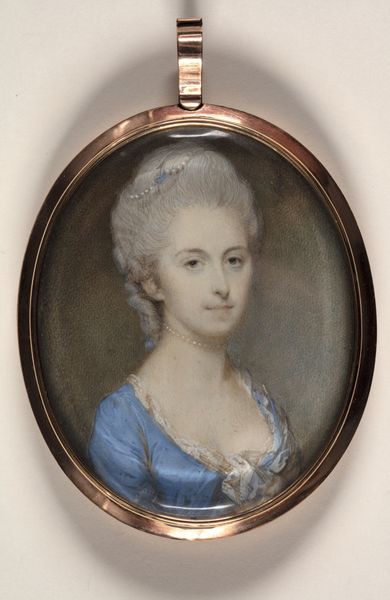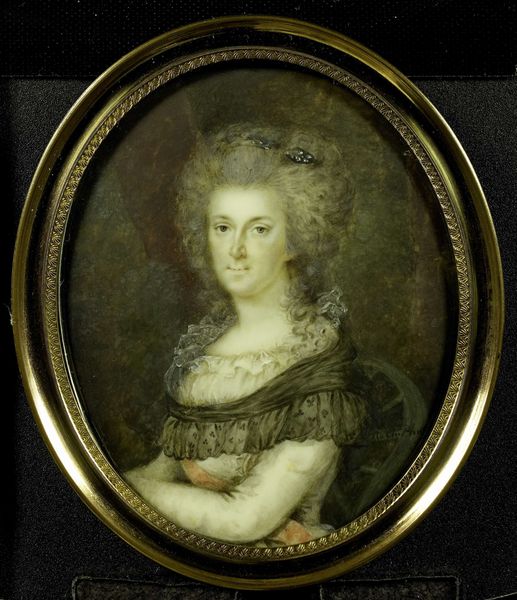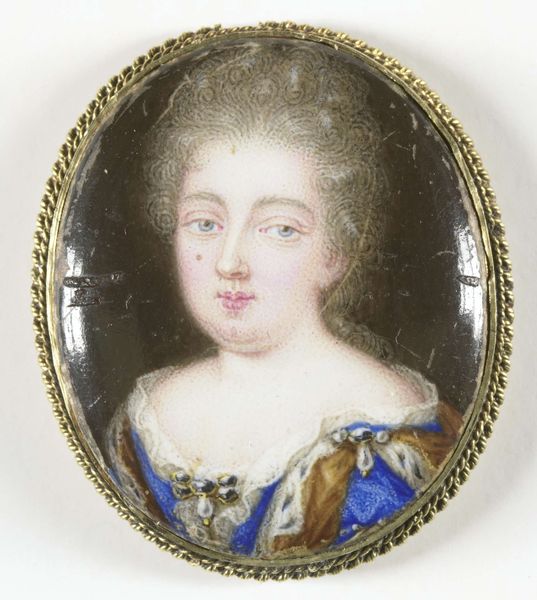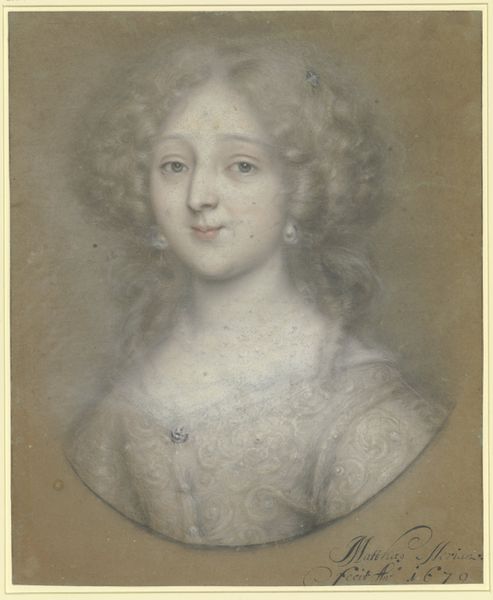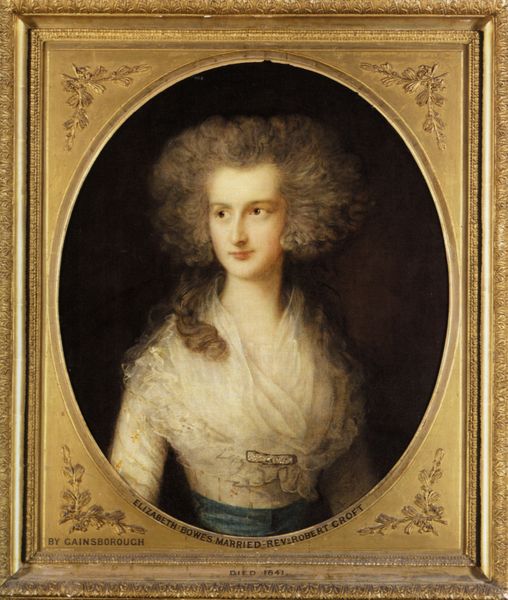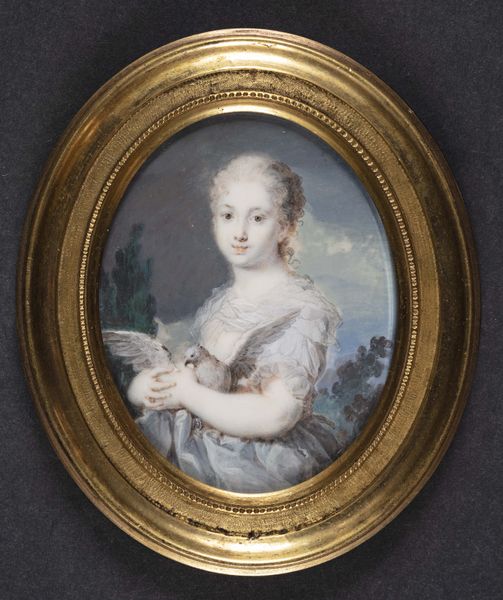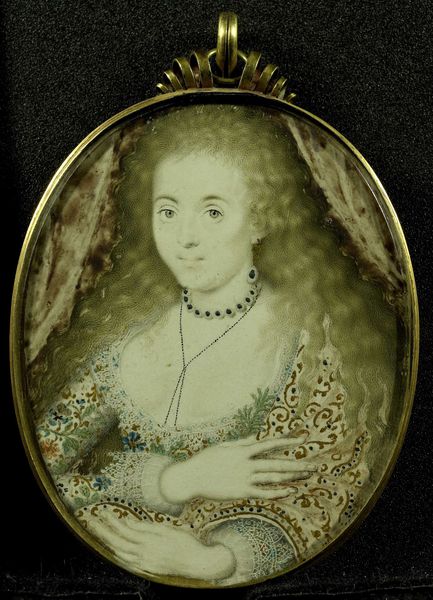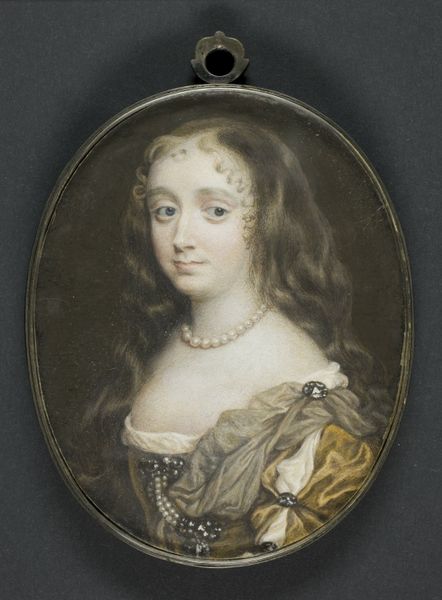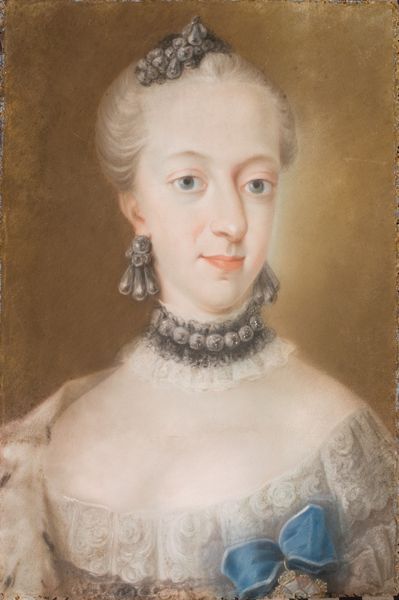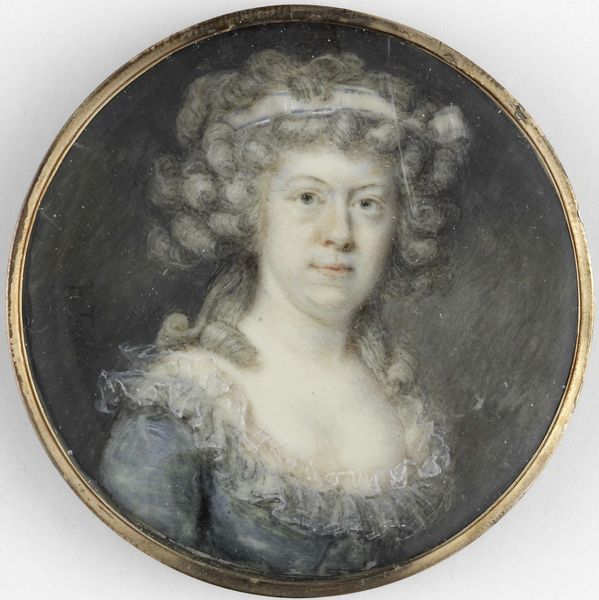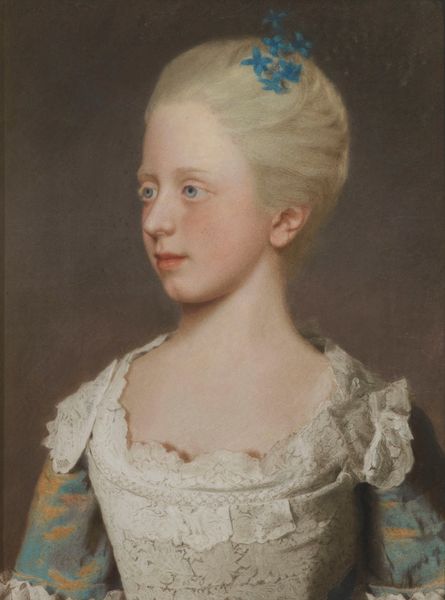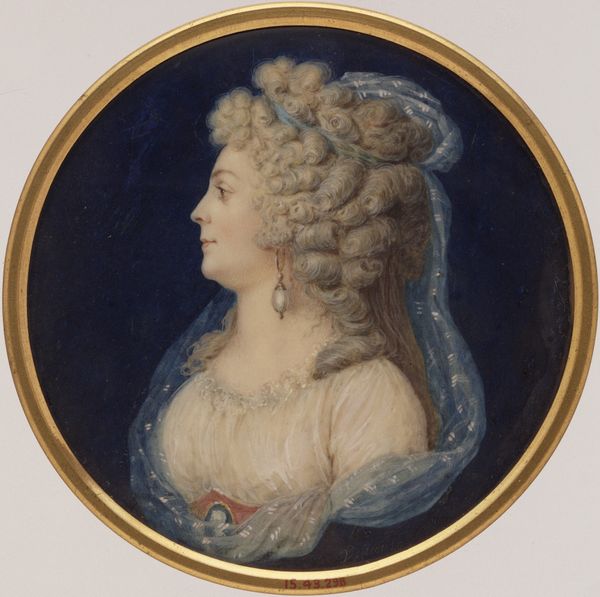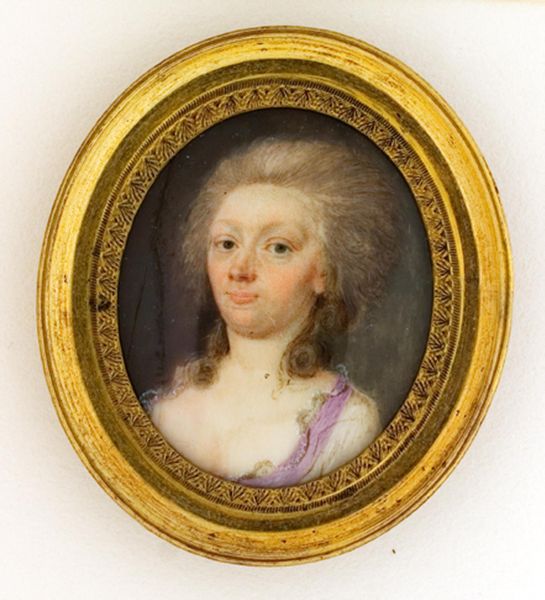
Maria Louisa (1745–1792), Holy Roman Empress, German Queen, Queen of Hungary and Bohemia, and Grand Duchess of Tuscany 1785 - 1795
0:00
0:00
Dimensions: Octagonal, 1 1/4 x 7/8 in. (31 x 22 mm)
Copyright: Public Domain
Curator: Here we have Heinrich Friedrich Füger’s delicate gouache on ivory portrait miniature of Maria Louisa, dating from around 1785 to 1795. Editor: It's exquisite! The soft colors, almost like a watercolor wash, give her a very approachable, almost fragile presence, despite the obvious markers of her status. Curator: Indeed. The luminous effect achieved with gouache truly captures the fashions of the late 18th century, with powdered wigs and elaborate jewellery setting her apart from ordinary women. What’s most interesting here is thinking about the act of commissioning and creating such a portable portrait for circulation within royal circles. Editor: Exactly. It really begs the question of the artist's role. To what extent was Füger showcasing the imperial might through skillful material manipulation? And how would it have circulated to construct and reaffirm Maria Louisa's authority in her absence? Curator: I agree. While the visible wealth emphasizes the divide of social strata, there's also a tactile quality that makes me think about craft production of court portraiture as a way to further disseminate ideologies within and outside the family, and maybe between allies. Gouache possesses less inherent worth than pure oils but demands tremendous control, patience, and, significantly, the contributions of skilled workshops to fulfill orders and achieve perfect, gemlike clarity. Editor: A poignant perspective! The dissemination you're talking about reminds me of how her image then served not just as a representation of an individual but as a symbol of the Habsburg dynasty. The miniature format invites intimacy but it served state functions beyond personal affect, projecting soft power across territories. It reminds us that even personal likeness in this historical era cannot be separated from the grand scheme of social-political representation. Curator: Certainly. It seems her position as Empress becomes part of the artistry. Editor: It’s a potent reminder that what we think of as personal often performs an unseen cultural task. Curator: Thank you, it highlights the multifaceted purpose that material can serve, in this case as a vessel of status and tool of dissemination.
Comments
No comments
Be the first to comment and join the conversation on the ultimate creative platform.
